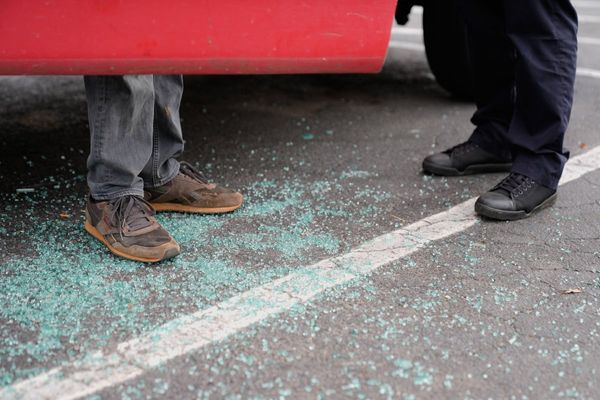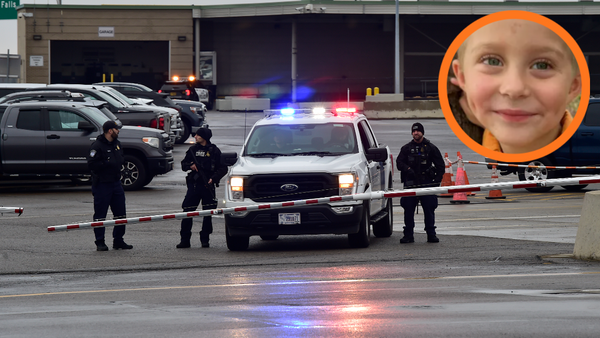
The internet has a new favorite pair of celebrity cats: Hazel and Holly, two mountain lion cubs whose recovery journey at a California zoo has attracted a loyal following.
The abandoned cubs were brought in just a few days apart to the Oakland zoo, after wildlife officials realized they had been separated from their mothers. They have since forged a close bond, racking up millions of views on the Oakland zoo’s social media pages where viewers watch them cuddle and wrestle together.
They are “growing quite fond of each other”, the Oakland zoo said in a 11 February Facebook post.
The duo aren’t the first California mountain lions the public has fallen for – celeb cat P-22 lived in Los Angeles’ Griffith Park for a decade and made headlines every time he was spotted. Their influencer status could help raise awareness of an animal that is facing grave challenges: deaths from vehicle collisions and a dwindling habitat that causes inbreeding threaten the species in the near term.
The cubs were both rescued from the Santa Cruz mountains by California’s department of fish and wildlife. When cubs are brought in, they are generally emaciated and starving, says Oakland zoo veterinarian Alex Herman, and they also usually have anemia.
Sometimes the wildlife officials know what happened with the mother, but other times it’s a mystery, Herman says. “It’s technically called maternal neglect and I hate that term – but they were separated,” she says. Fish and wildlife officials don’t take the situation lightly – if they get a report of a cub alone they set up cameras and monitor the area for days to ensure there isn’t a returning mother.
That’s important because once cubs come into a zoo for care, they generally can’t return to the wild for the rest of their lives.
We'll continue her recover and start gradually working up her activity level over the next few weeks!
— Oakland Zoo (@oakzoo) January 20, 2023
(2/3) pic.twitter.com/snnGYHhIz5
In Hazel’s and Holly’s cases, their mothers never returned. And for Hazel, who arrived in early January, it was particularly grim. “We couldn’t believe she could even walk in her condition,” says Herman, adding that the vets assign a body score to animals, with 10 being obese and 1 being emaciated – and Hazel was clearly a 1. “She was literally skin and bones, and needed a blood transfusion as soon as she arrived.”
Holly also had no parents around and was rescued in late December, when she was about three or four months old.
Each mountain lion has their own personality – Hazel is super curious and self-reliant and Holly is more reserved and tough, Herman says. “They are definitely charismatic and clearly individuals.”
Since 2017, the zoo has cared for 24 mountain lions in its 17,000 sq ft hospital, says Herman – and it hasn’t always been straightforward. The longest a mountain lion was in the intensive care area was 34 days: that was Cal, who was treated for burns on his feet after the Zogg fire in 2020. He required daily care and anesthesia to change the bandages. “Cal just was an easygoing guy,” says Herman. “We had to do so much to save his life and he was the most forgiving and friendly.”
In addition to healthcare, the rescued animals receive behavioral therapy – the zoo likes to give them choices about their activities to build their confidence. A lot goes into little decisions about their habitat, Herman says: should they be given smooth round logs to play on or unstable logs, so when they walk across it wiggles a little bit? A veterinary rehabilitation doctor helps figure out ways to rebuild their muscles.
Some mountain lions are eventually able to return to the wild, but it’s unclear what the future holds for Hazel and Holly. In a few months, they will be transferred to the Big Bear Alpine zoo in the San Bernardino mountains of southern California to spend their days together. Eventually, Herman hopes to create a “rewilding” program so some cubs can be nursed back to health and reintroduced in the wild – but that’s not an option right now.
Mountain lions are not critically endangered yet, but their population is in a decline that makes this time especially vital. She points to the need for more wildlife overpasses like the Wallis Annenberg, being built over the 101 freeway in northern Los Angeles county, as the main reason cubs come in without their mother is due to vehicle collisions. In Santa Cruz, the first highway underpass for wildlife was recently completed.
“Coexistence is complicated but [it’s] so important to realize the time is now,” Herman says. “This opportunity might disappear in a couple years.”







